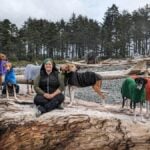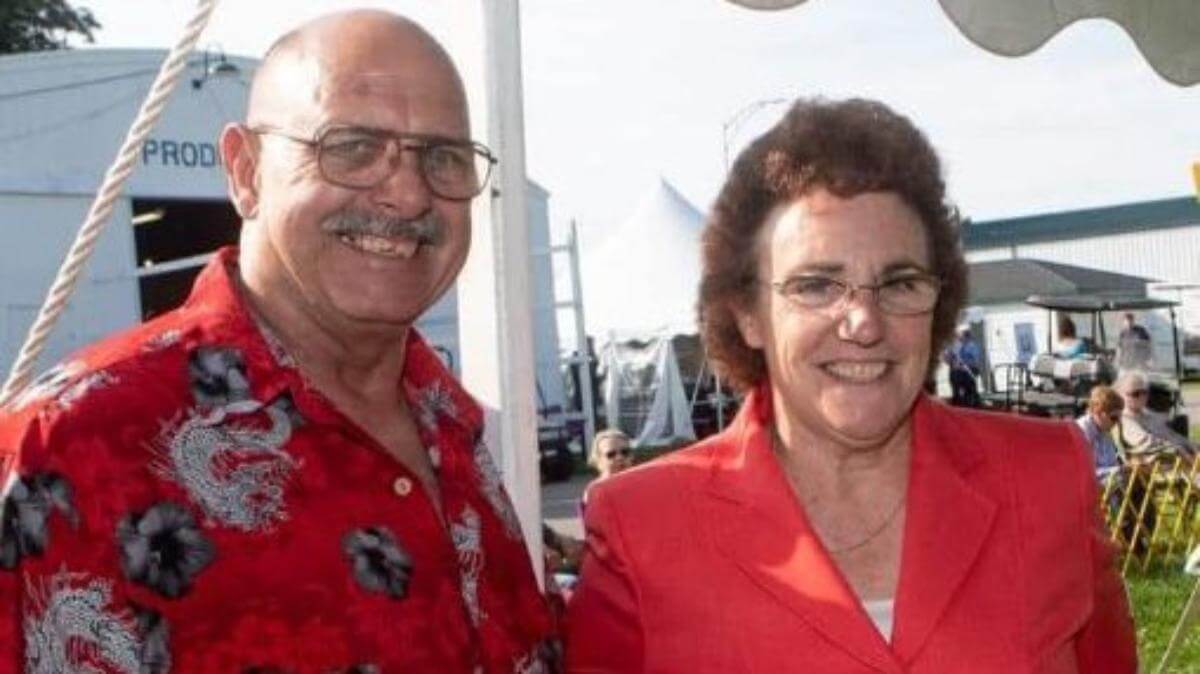
Home » Keith & Erin Olsen | Silhouette Elkhounds

Keith & Erin Olsen
1. We are Keith and Erin Olsen of Silhouette Elkhounds. We live in Holly, Michigan, and Erin, as a second-generation dog person, has been in purebred dogs for over 50 years. Her Mom had a large boarding, grooming, and training kennel. She raised Doberman Pinschers, Shetland Sheepdogs, and Best in Show-winning Affenpinschers. They trained basic Obedience, competition Obedience, Drug Detection dogs, and Protection dogs. Keith’s Mom raised Poodles and has been actively involved in purebred dogs for over 50 years as well. Keith usually shows the class animals and finishes them, while Erin concentrates on the Specials. The Norwegian Elkhounds were Keith’s breed when we met. We are now in our sixth generation of Group- and Specialty-winning, Top 10 dogs, and now, a BIS winner. We have been breeding the Elkhounds for 26 years.
2. The Elkhounds are a hearty, agile breed, so the square profile, weather-resistant coat, small upright ears, and tightly curled tail over the center of the back are all trademarks that identify the Elkhound any way you look at them. These characteristics are important for the health and welfare of the breed when the dogs are used for what they were bred for.
3. Yes, the demand for Elkhound puppies is still high; just not enough quality Elkhounds are being bred at this time. According to our pedigree database, in 1953 there were 30 to 40 Elkhounds listed in the stud books; for the first month in 2025, five were listed. Dwindling numbers and breeders are the reason we are a low-entry breed.
4. We have started doing DNA and genetic testing, as well as the other health testing, to help make educated choices in breeding. We also promote the breed whenever we can, in person or online. We are always open to answer questions and promote purebred dogs and our breed. We also have the largest Elkhound database in the United States, and this includes health tests, if frozen semen is available, and pedigrees. Without the history of the breed, we lose valuable information on the past dogs.
5. Yes, the last several years it has been the “adopt, don’t shop” mindset, but we try and educate people about purebred dogs and ethical breeders. We explain that the true preservation breeders are not responsible for the overpopulation in the shelters and that many of us also do rescue work.
6. The decline in the number of preservation breeders and exhibitors in the sport is a concerning trend. I think new people coming into the sport really need to work with a good mentor and learn the ins and outs of everything—from taking care of dogs at home and on the road to anything in between. Also, study other breeds; you never know what you will learn from other breeds and breeders.
7. Positive changes include the programs that are trying to keep our young people safe; there is room for improvement, but they are on the right track. Also, the new health testing for breeders, and the Internet (both good and bad) for researching dogs, people, and anything to do with showing and breeding. When used for research, it does open up a lot more information than was once available.